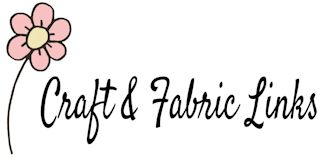|
|
| HOME SEW CRAFTS SHOP |
|
BUSINESS BOOK
Create Your Way To Success |
| lessons craft patterns sewing patterns |
Chapter 6: page 1 of 3
|
|
Index & Table of Contents
Please read our Disclaimer and Terms Of Use before reading this book. |
|
Page 1: Business Plan
|
Why Do I Need A Business Plan?Before proceeding, careful planning is needed to ensure business success. Special "business tools" reduce risk and increase chance of success if used properly. Each tool covered in this chapter plays a big part in the success of your business, so don't leave any of them out. These tools include Cash Flow Analysis, a Business Plan, Budgets, Business Volume Projection and Time Management (calendars, time lines, etc.). BUSINESS PLAN The business plan is the overall outline of the business. It forces a business owner to think about all areas of the business and make some important decisions regarding the business. If any of the plan is incomplete, it means there is a hole in that area of business management. The business plan can be an informal set of ideas kept in one's head, or a carefully written out document. I prefer a written plan, although there are plenty of very successful businesses that work from a loose set of ideas that are nowhere but in the owner's head. Banks don't ask for a business plan as often as they have in the past, but a business owner needs to know the answers to the questions that a business plan addresses. The following is an example of a business plan format. There are several different types of business plans; the following plan is simple, but addresses areas that I think should be covered. If you are able to complete all sections, you have covered a lot of key areas of business management, and you greatly enhance your chance of success. 1.0 The Company 1.1 Historical Development Write a few paragraphs about the history of the business. Purpose? Background? Need? Who started the business? How did the business come about? 1.2 Current Status Write a few paragraphs about the current status of your company. Who is involved now? Current focus? Location? Qualifications of owners? Whom does the business work with in the community (target customers as well as other businesses to collaborate with)? Competitive edge? 1.3 Plan For The Future Write a few paragraphs about plans for expansion into new areas (new products, services or locations). Also address expansion plans for current offerings. The above (part 1) is rather general. You do not need to be extremely specific, but your ability to complete this section assures that you know where your business has been and where it is going. Later parts are much more specific. 2.0 Products / Services 2.1 Description / Application This section may be several pages. Write very specific paragraphs about your products and services.
EXAMPLE:
Accounting / Business Management Consultation
From here, you would go into detail on each of the above services. For example, for the first one, I might start out as "Accounting services are supplied to businesses either on an as-needed consulting basis, or as a monthly service. A reasonable monthly fee covers accounting reports, as well as one-on-one consultation at the time the reports are presented..." Each topic would have its own paragraphs (or section of paragraphs). 2.2 Benefits How do your customers or clients benefit from your products or services? If there is no benefit for them, they will not purchase it! You must be able to demonstrate a clear benefit - a "need" that you are addressing.
EXAMPLE:
3.0 Market Analysis 3.1 Customer Profile Write a brief description of your typical customer or set of customers. 3.2 Overall Market This is a tough one because it requires RESEARCH on your part. You need to know how many of your type of consumer there are, how many competitors you have etc. You must understand your market in order to know how you will get clients or customers to come to you, rather than to a competitor. Know your customer as well as your competitor! Charts and graphs can work well here. Refer to graphs showing the growth rate of your area, especially if it easily correlates to an increase in need for your product. You can learn a lot of key information by completing this area of the business plan. 3.3 Market Segment You need good, specific data here. What percentage of the market are you planning to overtake in each area of service or product? For example I might state that I plan to take on x% of new businesses forming in my community and there are x number of new businesses forming each year; therefore I plan to increase the accounting portion of my business by x clients per year. This part of the plan takes time and requires work on your part. No "imagined" numbers here - you need real facts and figures. Also be sure to address the competition - what do they provide and how will you be different? Why, specifically, would someone come to you rather than to your competitors? Location? Service? Access to clients? 4.0 Marketing Strategy and Sales Plan 4.1 The Prospective Customer Who is your customer? Are they divided into specific groups (women, children, seniors, etc.)? You need to identify your specific customer types so you can plan your marketing strategy. Remember the car detailer in Chapter 5? He knew that professional business people were likely candidates for his service; therefore he posted fliers on expensive cars in the parking lots of medical and legal offices. It worked very well. Divide your customers into groups and attach them to the various services you provide. In the example I just gave, he had one group of professional clients whom he advertised his total detailing service to. If he also provided basic cleaning, he could have advertised this service to another market. 4.2 Sales Plan Advertising Pieces What will you use as advertising pieces? Business cards? Brochures? Trade shows? Arts and Crafts fairs? Art galleries? Online videos? A website? Social Media? Online sales through a 3rd party (such as Amazon or Etsy, etc.)? List them in this section. You might also include samples of what you plan to create. You might have different business cards, brochures etc. that target your different customer types. Other Advertising List other types of advertising that would be useful. You might join a crafter's group, your local chamber of commerce, etc. Be specific, because you need to have a well thought out plan. 4.3 Marketing Costs vs. Sales Projections This is a difficult area. People often make up all kinds of nice numbers here that look good on paper but cannot be backed up by any real statistical analysis. What you are looking for in this section is an idea of how your marketing will pay off. How much in sales are you expecting to get by joining a crafter's guild? Sometimes, there are no hard facts here. For example, you may not make direct sales from the guild, but your membership might open other avenues for you. 5.0 Operations: Service Delivery How do you plan to deliver your services and products to your customers? How will you initially reach them? This is the section that covers your plans for the actual operation of these activities. Do you plan to meet potential customers through phone calls? Craft fairs? Craft Circles? Internet? Where will your products be physically located? How will they be delivered to your customers? Mail? Customer pickup? Break down your business again into different products and services/products and customer types and decide how you will get your products out to these people. Will you provide "free samples"? How will these be delivered? If you have "home crafting parties" how will your products be delivered? All of these details are worked out in this section. 5.2 Materials and Inventory If you must maintain inventory, where will it be stored? How will you keep track of it? How will you ensure the inventory is kept at an adequate level? How will it be safeguarded (this is especially important if you have employees)? 5.3 Equipment What equipment is required for your business? Sewing machines? Storage containers? Software? Computers? Video making supplies? Cameras? Shipping containers and materials? List all necessary equipment. This is important because you might find in making this list that important pieces are missing. It would be a shame to grow quickly and get a large amount of sales only to find out that you are not prepared to ship the products in an efficient and timely manner to your customers. 5.4 Personnel Will you have employees? What will their specific functions be? How will you prepare for company growth? Will you have a sales staff? Will you be outsourcing (such as online printers and suppliers of goods) and if so how will you locate them and test their quality? If you hire full time employees, what is the compensation plan? This book doesn't cover the full scope of company responsibilities regarding employees. You need to call your local, state, and federal governments for more information. Refer to Chapter 3. 5.5 Quality Control How will you maintain quality control? Who in your business is responsible for ensuring that all products meet your standards? Can you maintain quality control as your business grows? 6.0 Management Plan 6.1 Operational Areas/Management Responsibilities Identify your areas of service or product types here. Who will manage the different areas? Do you have a partner? Perhaps one of you is responsible for procuring materials, as well as marketing and sales, and the other is responsible for making the items that will be sold, or overseeing the making of the items. Perhaps you will run your own craft business, but your spouse will take care of the books or computer work. 6.2 Skill Requirements Do you have the skills necessary to get the job done? If your spouse is going to do the bookkeeping, does he or she know how to do this? What skills are necessary for your business to be successful? How do you plan to obtain any missing skills? 7.0 Financial Plan: Resources Needed 7.1 Needs, Sources and Costs Equipment and Facilities Again, make a list of equipment needed. This time, however, add the cost of each piece of equipment. What about facilities? Do you need to rent space? Remember storage space! List every piece of equipment you will need including an office chair for the computer, pens, paper, "Bookkeeping For Dummies" book etc. This area can add up quickly and you need an accurate list of costs. If renting space, do you need a coffee machine? Cart for your coffee machine? You would be surprised at how much it can all cost by the time you finish the list (this is where you might decide you don't really "need" some things!). Start Up Costs This area includes other costs of starting a business. What will a CPA cost? Lawyer? License fees? Permit fees? Overhead Make up a list of monthly overhead costs. The list must be detailed. You might think there is no overhead because you work out of your home, but you will incur extra costs with your business. If you sew, you might use more laundry soap due to pre-washing fabric. Your electric or utility bills may be effected as well. Typical costs of overhead include:
advertising Employees may be part of overhead if they are paid a set fee, such as office help. Working Capital This is where most businesses run into trouble. Do you have enough funds to maintain your business? If your monthly costs of overhead come to $1,200 per month, do you have funds to cover this? You must be able to accurately say that your profit margin on your products will be at least this much. This doesn't include an amount to be paid to you (unless you included a fee for yourself as part of your "overhead"). What will be your minimum amount kept in checking? It should be an amount to adequately cover your basic (overhead) costs. Overhead costs are costs that are not tied to sales. They are incurred whether or not you have sales, such as rent (if you are working at home, higher utilities would probably only occur while you are manufacturing your product, so utilities would not be overhead in that case - if you had no sales, you would not have lower utility bills). In the world of economics, overhead is called a fixed cost. It is "fixed" at a certain amount because you will have that same cost no matter what your sales are (remember that fixed costs are only fixed until a certain point - if your sales really boom, you may need to rent a larger space). When do you plan to pay yourself? Remember that all payables must be considered first (i.e. remember what bills need to be paid before paying yourself). 7.2 Timing and Source of Investment Equipment You need a carefully laid out plan that uses a time line for costs expected. How will the overhead be covered? What is the source of funds? When will various pieces of equipment be purchased and how will they be tied to funds? I always gave my clients a "cash flow" file I created on Excel. They used it on an on-going basis. Before making any decisions affecting costs they were to plug the numbers into this spreadsheet and see how it played out over time. When a client called and asked whether he should hire someone to help with filing, my first question was, "How does it look on the spreadsheet"? It may look fine for a while, but 5 months out (maybe insurance is due then), he sees that he suddenly runs negative. The shortage may be 5 months away and cash flow spreadsheets are less accurate the further out they go, but this gives a good warning. Facilities How long can you stay in your current facility? If you work at home, how long can you do that? Will you need a larger space? If so, when? Will increased funds become available by that time? In this section, remember that you are not just identifying costs. The key to this section is identifying the timing of the costs to ensure that funding will be available. Financial Plan: Activity Projections This is the section that contains your charts and graphs and financial statements, which are based on all of the preceding information. Remember to keep the following rules in mind when developing your plan. 1. Address all sections of the business plan. This will point out to you the areas in which you really don't have a clear enough idea on how to proceed. 2. Be complete, but not overly specific; don't create a need to constantly update your plan. 3. Keep your plan confidential. This is your "business bible" and contains many of your most important business secrets. 4. Your business plan may be helpful in obtaining financing. 5. Refer to your plan often. It will help keep you on your planned path (although you may have good reason for changing from your plan - in that case you might need to update your plan). |
|
Page 1: Business Plan
|
| Index & Table of Contents Chapter 1 Chapter 2 Chapter 3 Chapter 4 Chapter 5 Chapter 6 Chapter 7 Chapter 8 Resource Links |
Visit our store! |
Free Videos |
Please ShareI rely on advertising to keep my site free. Please share with friends. |
Privacy Policy & Terms Of UseBy using our website, you expressly consent to our Privacy Policy and Terms & Conditions. All Patterns, images and instructions are copyright protected. |



